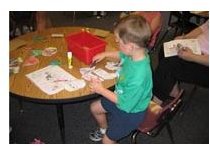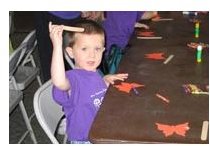A Snapshot of the History of Differentiated Instruction
Back to the Beginning
The history of differentiated instruction dates back to the 1600s when one room school houses were the staple in education. In this setting, one teacher was responsible for educating students in a wide range of grades and ability levels. One room, one teacher, no technology. By 1919, there were upwards of 190,000 one room schoolhouses operating in the United States. Even though today there are fewer than 400, the wide range of abilities that were found in these schools do exist in our standard classrooms today.
Transition to Grading Schools
As our country transitioned from the one room schoolhouse to grading schools, it was assumed that all children of the same chronological age could learn the same materials at the same pace. Gone were the days of the dunce cap and the hickory stick. However, struggling students still existed and those who could not keep up with their peers left school and sought work.
There was however a man named Preston Search in Colorado who was ahead of his time. In early 1889, he worked to make it possible for students to work at their own pace without the fear of retention or failure. Search pushed his teachers to build an environment where students could be successful, each at their individual pace.
With the introduction of achievement tests by 1912, there was then evidence that the gaps in children’s abilities were much greater than realized. As intelligence tests were also implemented, educators such as Frederic Burk and Mary Ward began a movement to make textbooks self-instructive so that students could progress at their own pace. In 1919 a member of Burk’s staff was hired as the superintendent in a the Winnetka district, a Chicago suburb, and the teachers there worked diligently to fit a child’s education to their maturity and readiness. By the mid twenties the “Winnetka Plan” and others like it spread and it began to look like schools would begin to fit their teaching to the students.
William H. Kilpatrick’s Project Method derailed the “Winnetka Plan” and others like it; educators began to think the the individual work in Winnetka “divorced the mechanics of learning from motivating social experience.” (Washburne, p 140) Schools went back to their former programs, widely ignoring the varying readiness levels of their students.
Individuals with Disabilities Education Act
The most recent change in the educational landscape in regards to differentiation is the Individuals with Disabilities Education Act (IDEA). It was enacted by Congress in 1975 to ensure that children with disabilities have equal access to a free and appropriate public education. Changes were made by Congress in December 2004, with final regulations added in August 2006. The IDEA provides guidelines for schools as they work to provide an Individual Educational Program (IEP) for students who have been identified as requiring special education services. These plans help guide teachers as they differentiate instruction for these students both in the general education classroom and in the special education classroom.
Daily Implications of Differentiated Instruction
I see daily how difficult it is to differentiate instruction. Teachers can have students that range 3 grade levels in math and reading

within their classrooms. It is a daily struggle to keep tabs on each student and their level of readiness. Once we know where they are, then we tackle the task of adapting our lessons to meet the needs of individuals. We also must not forget to differentiate for the gifted as well as those who are below level.
The important thing to remember as teachers is that differentiation should be quantitative, but qualitative. It isn’t enough to just give struggling students less work. We have to tailor the assignments to match the needs of our students. Assessment must also be a large piece of the differentiation puzzle. By conducting daily, informal assessments, teachers can alter what they teach and how the information is presented.
I think that to really enact change when it comes to differentiating instruction, it must first become an integral piece of training pre-service teachers. Current teachers also need training through professional development to help them become proactive in their approach to teaching students with varying ability levels. Differentiation can not just be another strategy in a teacher’s toolbox. It needs to be a way of life in the classroom, a daily occurrence that happens without hesitation.
Sources
* https://www.ascd.org/ASCD/pdf/journals/ed_lead/el_195312_washburne.pdf
* https://wvde.state.wv.us/institutional/PD/Differentiated%20Instruction.pdf
* Photos: personal library
